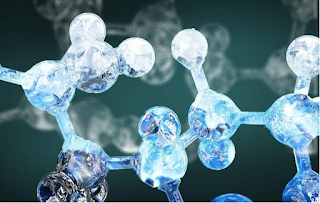The Introduction of Cytokine Storm

The Introduction of Cytokine Storm
What is the cytokine storm?

Figure1.Cytokine Storm
Cytokine storm, also known as hypercytokinemia, is an inappropriate immune response due to the positive feedback cycle between cytokines and immune cells. Cytokine storm is an immune response to acute or chronic injury, which may be caused by the disease itself or by treatment for potential diseases. The result is an overwhelming release of cytokines that can cause sepsis-like reactions and lead to multiple system organ failure or even death.
Cytokine storm symptoms
Cytokine storm symptoms are mainly fever, swelling, extreme fatigue and nausea. It can be fatal in some cases. When the immune system confronts pathogens, cytokines lead immune cells to the infected site. At the same time, cytokines also activate these immune cells, and the activated immune cells produce more cytokines.Cytokine storms can cause serious damage to body tissues and organs. For example, when they occur in the lungs, excessive immune cells and tissue fluids may accumulate in the lungs, block air entry and exit, and cause death. Cytokine storms are associated with various infectious and non-infectious diseases, even the unfortunate consequences of therapeutic intervention attempts.It has been proved to be present in graft-versus-host disease, multiple sclerosis, pancreatitis or multiple organ dysfunction syndrome. With the progressive research and development in this field, understanding the cellular localization and molecular mechanism of cytokine storm will be helpful for the treatment of viral symptoms, especially influenza.
Cytokine storms have the following characteristics:
1. In cytokine storm, a large number of cytokines and chemokines of different races are produced, which play a pathological role in the development of acute severe systemic inflammation complications.
2. Cytokine storm can cause a variety of diseases including infection (severe sepsis, septic shock), trauma, injury, acute pancreatitis, rheumatic diseases.
3. IL-6 can be used as a biomarker of disease severity and prognosis in cytokine storm, and its expression efficiency is better than TNF-alpha and IL-1.
4. By triggering trans-signaling pathway, high concentration of IL-6 can induce various pathological functions related to thrombosis, vascular leakage and myocardial dysfunction, leading to tissue hypoxia, hypotension, multiple organ dysfunction and disseminated intravascular coagulation.
What is the cytokine?
Cytokines are small proteins secreted by cells for intercellular signal transduction and communication. They have autocrine, paracrine and endocrine activities, and trigger a variety of immune responses by binding receptors. The main functions of cytokines are the regulation of cell proliferation and differentiation, angiogenesis, immunity and inflammation.
Main types and functions of cytokine storm-related factors
1. Interferon (IFN) is a family of cytokines that play a central role in innate immunity of viruses and other microbial pathogens.According to the specificity of IFN receptor, it can be divided into three categories (I, II, III). IFN transduces signals through the Jak-STAT signaling pathway, and binds to receptors to initiate downstream signaling cascades, resulting in activation of transcription factors and induction of hundreds of IFN-stimulated genes.These genes encode protein products with antiviral, antiproliferative or immunoregulatory properties. IFN (usually combined with other drugs) can be used to treat viral diseases such as hepatitis C and hepatitis B, some types of leukemia and lymphoma, and multiple sclerosis.
2. Interleukin (IL), contrary to IFN, mainly plays a role in the differentiation and activation of immune cells and belongs to the immunomodulator. Interleukin can be proinflammatory or anti-inflammatory and, like all cytokines, cause multiple reactions.IL-1a and IL-1beta are pro-inflammatory cytokines that mediate the host's response to infection through direct and indirect mechanisms. In their biological functions, these cytokines increase signal transduction in acute phase, transport of immune cells to the site of primary infection, activation of epithelial cells and production of secondary cytokines.
3. Chemokines are the largest family of cytokines. These small secretory proteins are classified into four types according to the interval between the first two cysteine residues. Chemokines, as chemical attractants, play a role in controlling cell migration, especially the migration of immune system, contributing to embryogenesis, innate and adaptive immune system development and function, as well as cancer metastasis and other processes.Most chemokines are considered inflammatory, and they are released by various cells in response to viral (or other microbial) infections. The release of pro-inflammatory chemokines results in the recruitment of immune system cells (neutrophils, monocytes/macrophages and lymphocytes) to the site of infection. Although most cytokines are multipotent, chemokine recruitment of immune cells can be highly selective for specific cell types.
4. Tumor necrosis factor (TNF) may be the most famous and powerful pro-inflammatory cytokine, which plays an important role in cytokine storm. TNF, expressed by a variety of immune cells, is considered to be the central cytokine of acute viral diseases, including diseases caused by influenza viruses, dengue viruses and Ebola viruses.TNF protein superfamily enlarges the multipotency of TNF. Excessive TNF production is associated with many chronic inflammation and autoimmune diseases. TNF inhibitors have been approved for the treatment of inflammatory bowel disease, psoriasis and rheumatoid arthritis.